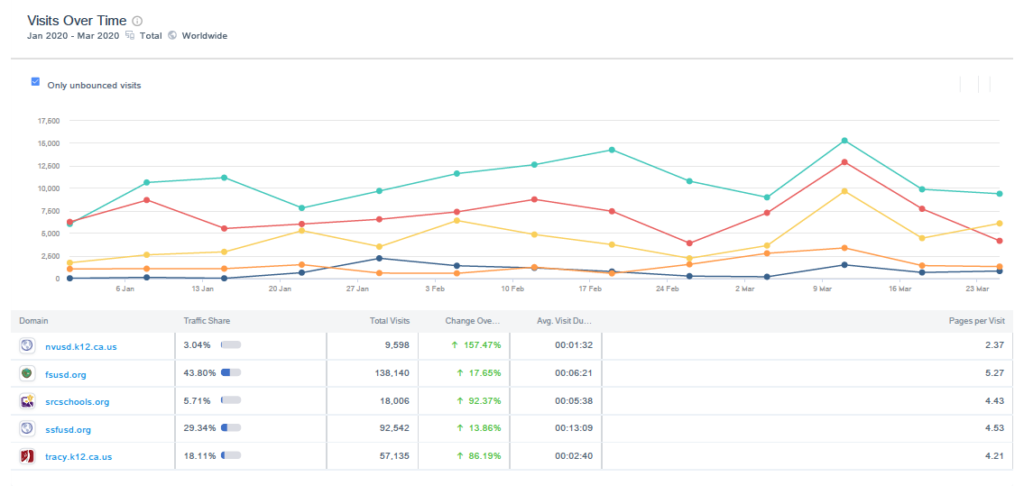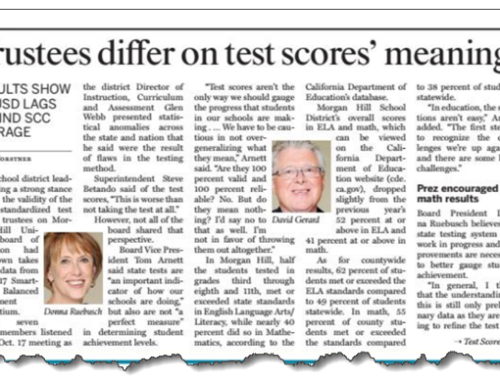The moment in the fall when school opens will be a moment of reckoning for districts. They will learn to what degree their parents and students have confidence in their abilities to minimize the risk of infection with COVID-19, and maximize the learning opportunities. It’s a measure of parent engagement districts will take seriously. Funding will hang in the balance.
Education reporters are already calling attention to the risk of lower reenrollments. This article in the national online publication, Education Dive, examined the surge of interest in home schooling. A longer article in the San Diego based online media journal, Voice-of-Education, offered this warning in its title: “An Enrollment Crisis is Coming for School Districts..” Their reporter interviewed parents who were looking toward starting schools of their own, and others who were transferring to other districts where they felt those in charge were exercising better judgment. If there’s a single measure of parent engagement that matters most, it’s got to be this reenrollment decision.
How are districts measuring parent engagement
For the three years since districts have been required by the CDE to report measures of parent engagement, I’ve been looking for signs that some districts were ready to approach this challenge with gusto. Surely, I thought, with almost a thousand districts in California, some would take seriously the signals they already have in hand: school board election turn-outs, parent attendance at teacher conferences, number of parents running for seats on their schools’ site councils. Of course, my field recon is imperfect, but I’m not seeing signals that districts are taking this measurement challenge to heart.
It seems a shame to waste an opportunity like this. While I’m not a believer in the abstract virtues of local control (have policy leaders forgotten that local control was the rallying cry of southern segregationists), I was excited to see Sacramento stand back and invite districts to take more initiative in taking their own temperatures. So let me tap my two decades of experience helping districts communicate their schools’ vital signs, and offer some suggestions to those who are ready to use the freedom they’ve been given.
Here are three suggestions for estimating the degree to which your parents are “engaged” with your district. There are more dimensions to this, of course. But let’s start here.
Enrollment engagement — trusting your district to educate their children
Parents for at least 25 years have had many ways to school their children. Some home-school their kids. Some turn to parochial schools, and some to independent, secular schools. Some trust charter schools. Some favor schools outside their home district, and make use of the interdistrict transfer option. While we don’t see an easy way to estimate the share of all kids from 5- to 18-years-of-age who are being schooled in each of those five ways, we can turn to the Census Bureau to compare the share of kids of school age who are in private schools, and those in public schools. These results are effectively a market share analysis of your district’s success in persuading parents of children who are 5-to-18 years old to enroll in your schools. If you think you know your district’s success rate, email me. (One surprise we discovered when exploring the Census Bureau’s data was that San Francisco USD has the lowest market share of all: about 75 percent.)
Civic engagement — participating in school board elections
If your community cares about how your district is governed, they should turn out to vote in your school board elections. Why not use your turn-out figures over time to track this measure of voter engagement. You could also look at voter turn-out in parcel tax and bond measure elections, although it’s hard to attribute a “no” vote to something as positive as “engagement.”
Voter turnout in school board elections in California ranges from anemic to okay. Rarely is it above 30 percent of registered voters. (Even the mayor’s race in Los Angeles barely draws 25 percent turnout.) Often, according to scholar Rachel White at USC Rossier Graduate School of Education, it is far lower. One study of Michigan school districts by David Planck and Ann Allen noted turnouts of 5 to 10 percent.
Informationally engaged — turning to the district’s website for information
An engaged parent is one who is informed. Today, information flows from schools and districts to parents through websites. Using Google Analytics or software like SimilarWeb that enables you to compare your site’s traffic to others, you can track the usage of your district’s site with a range of simple measures. Unique site visitors per-day or per-week let you how many people came to your site. Page views let you know how much content (in pages) they clicked on during their visit. Duration on site lets you know how long they remained there.

This compares the volume of weekly page views on the websites of five districts. It begins early January 2020 and ends on March 23, 2020. (Report generated by SimilarWeb.)
This graph shows site visits by week from January 5 through March 23 for five districts. To compare the traffic fairly, results should be expressed on a per-student basis. But even expressed in raw counts, you can see that the district with the highest volume of site visits (Fairfield-Suisun USD) started with 10,000 site visits per week in the second week of the year, and as the pandemic’s shut-down of schools approached in March, weekly site visits rose to 15,000. This is in stark contrast to the two districts with low traffic (Santa Rosa City Schools and Napa Valley USD). I recommend that you compare your own website’s results against those of two or three districts that serve similar communities. The comparison will reveal much more than simple descriptive statistics of your own site traffic. (SimilarWeb offers a free trial.)
Start counting what matters
The opportunity you have to measure engagement is one you can act on now. It’s neither costly not complex. These are the days to move fast and frugally. Keep it simple and communicate it clearly and you’ll advance the cause of building bonds of trust with your public. In the current COVID-19 era, showing your parents that you don’t take their trust for granted is a good starting point.






